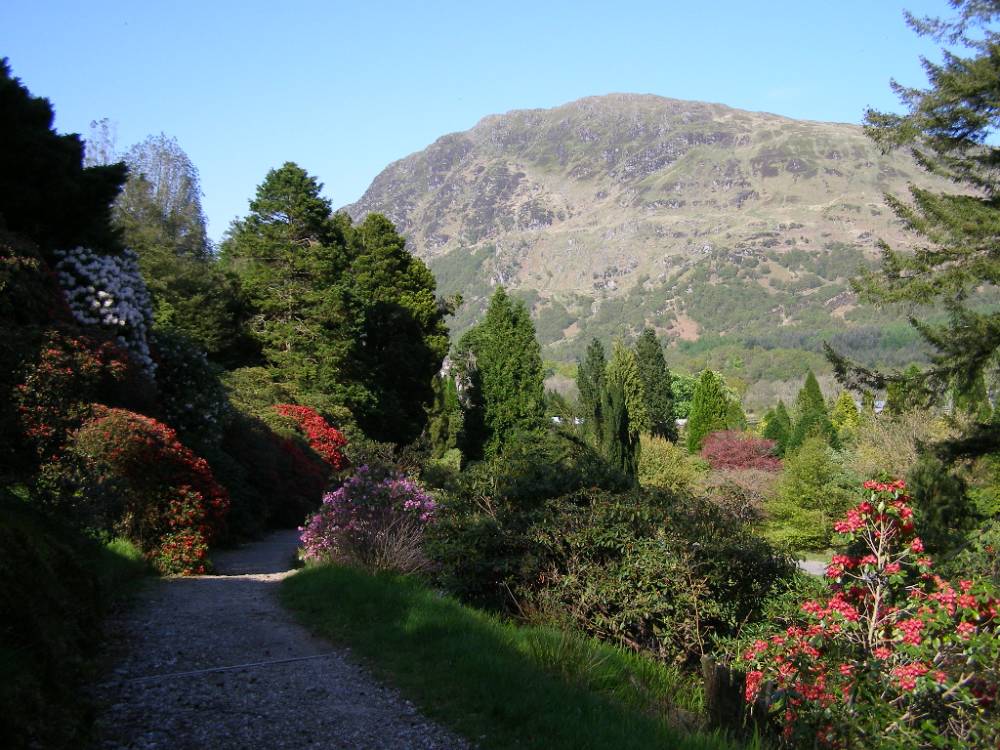Benmore House and Estate
CC BY-NC-SA, © Eva the Weaver
Benmore House and Estate
Benmore House was only a few decades old when it was bought by James Duncan in 1870. Duncan was a Greenock merchant who had made his fortune in sugar refining. He immediately started making changes, annexing the neighbouring estate of Bernice and planting 1500 acres of coniferous woods, draining and improving the Echaig, and building fences that are still there to this day.
During the time Duncan lived at Benmore many eminent men came to visit him. One of these was Sir Henry Morton Stanley, the journalist and explorer who made history as a reporter for the New York Herald when he was assigned to Africa to find the missing Scots explorer, David Livingstone. The meeting is immortalised by Stanley's casual greeting, 'Dr Livingstone, I presume'. Another friend was Charles Haddon Spurgeon, the English Baptist pastor, who at twenty-two was the most popular preacher of his day. His preaching attracted vast congregations and the huge Metropolitan Tabernacle in London, seating six thousand persons, was built to cope with them.
Duncan was a lover of the Arts and built a gallery housing a fine collection of paintings and sculptures which, when open to the public, was visited by thousands of people from all over the country. He commissioned the making of a pair of finely wrought iron gates inaccurately called The Golden Gates' which he exhibited at the Paris Exhibition of 1871, where they won first prize. They bear his initials. In 1873 he had them brought back to Benmore where they were erected at the Glen Massan entrance to the estate.
As well as this he created the foundation of the magnificent gardens which can be seen today. It is often assumed that he got horticultural advice from Sir William Jackson Hooker, a director of Kew Gardens who had a summer house at Invereck (on the site of the Eventide Home). Hooker had died in 1865, however, five years before Duncan had bought the estate. In all likelihood he has been confused with his son, Sir Joseph Dalton Hooker, who had also studied at Glasgow University and succeeded his father as a director at Kew. Planted in the grounds were shrubs, flowers and a magnificent collection of trees including an avenue of towering sequoias (giant Californian conifers) leading up to the house. The gardens contain over two hundred species of rhododendrons, making it one of the largest collections in the world, as well as many species of azalea, a vast number of exotic flowers and plants, and a unique collection of ferns. The gardens are one of the few places in the area where red squirrels can be seen.
A later owner gifted the gardens to the nation and today they are administered by the Royal Botanic Garden in Edinburgh. Thousands of visitors come to see them every year.
As told by Renee Forsyth, resident of Ardnadam
More information on visiting the area can be found here.
